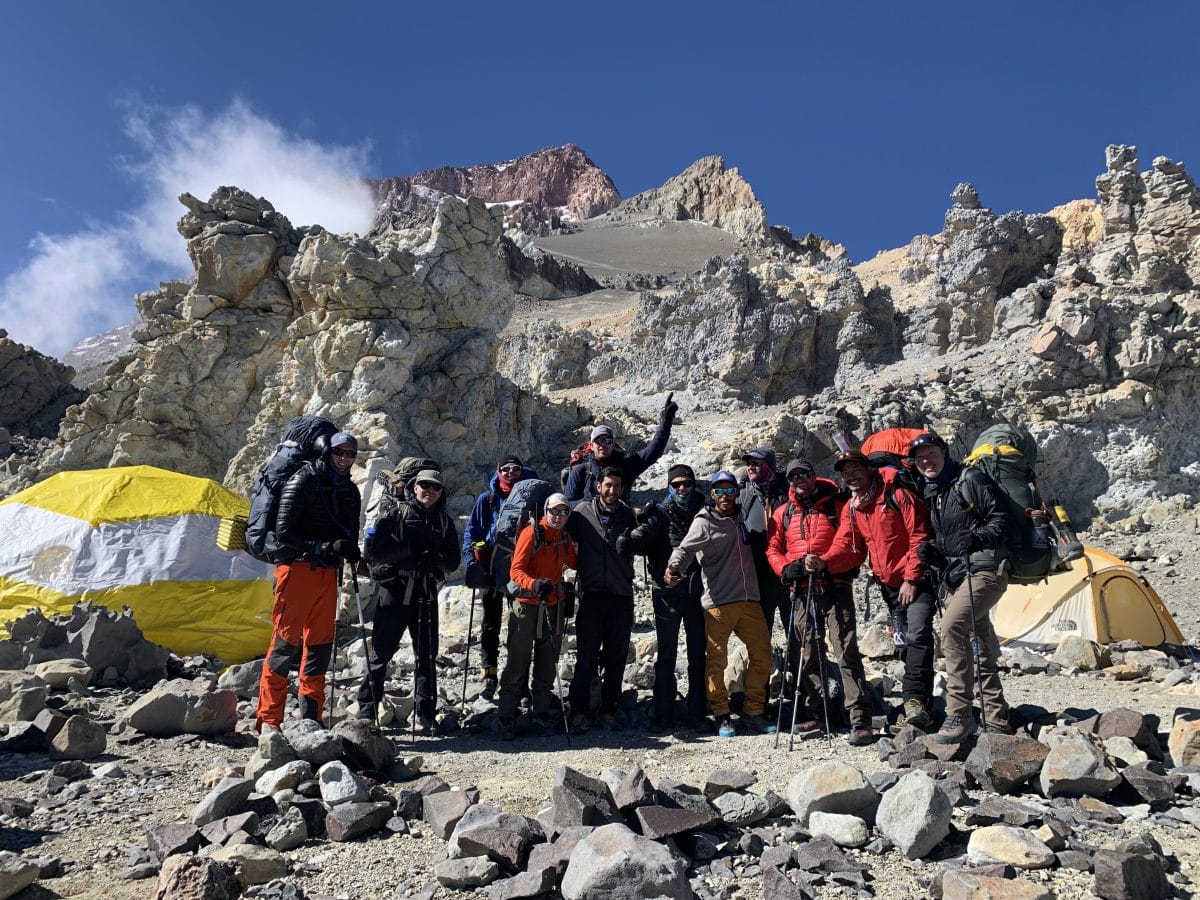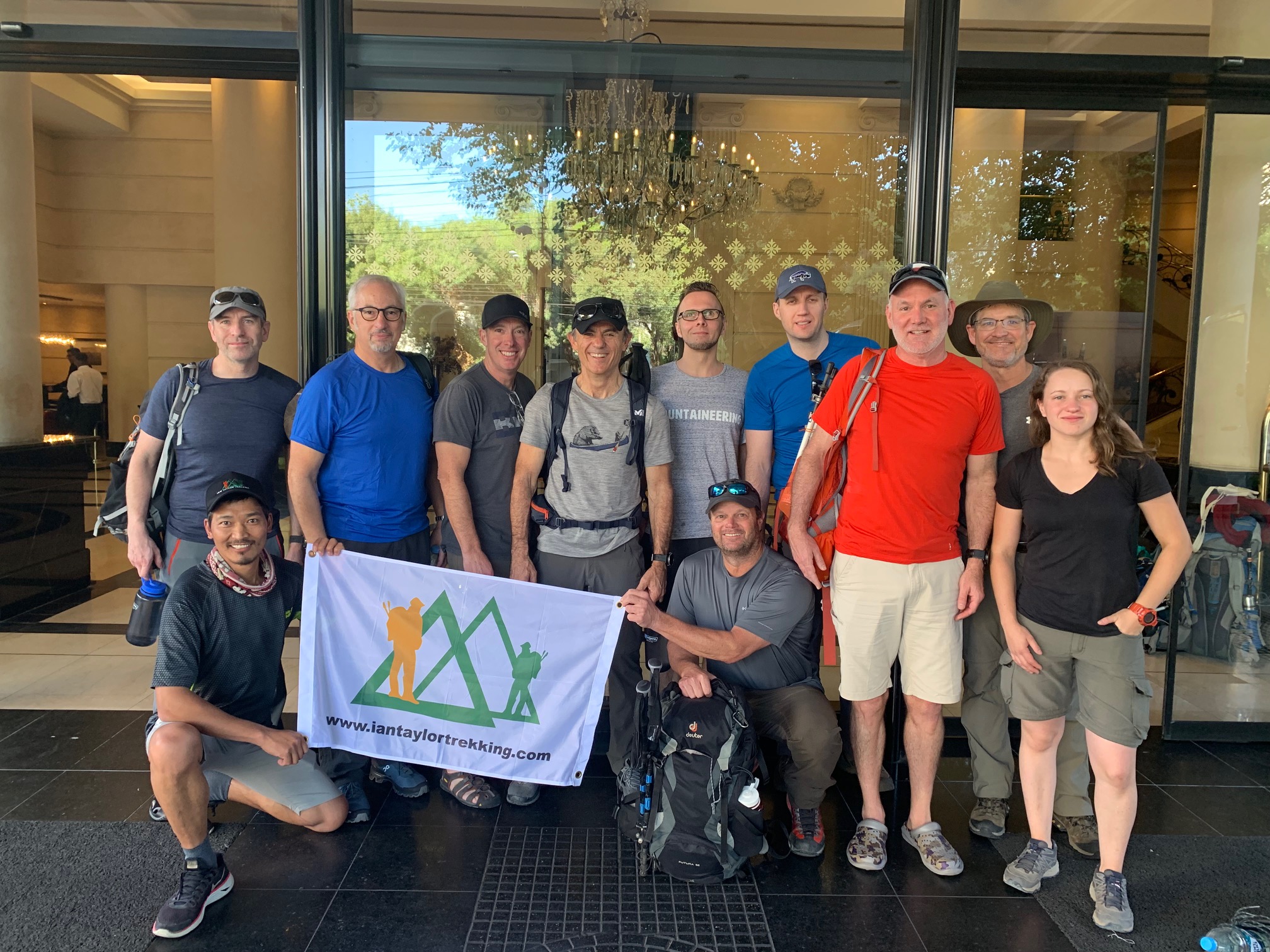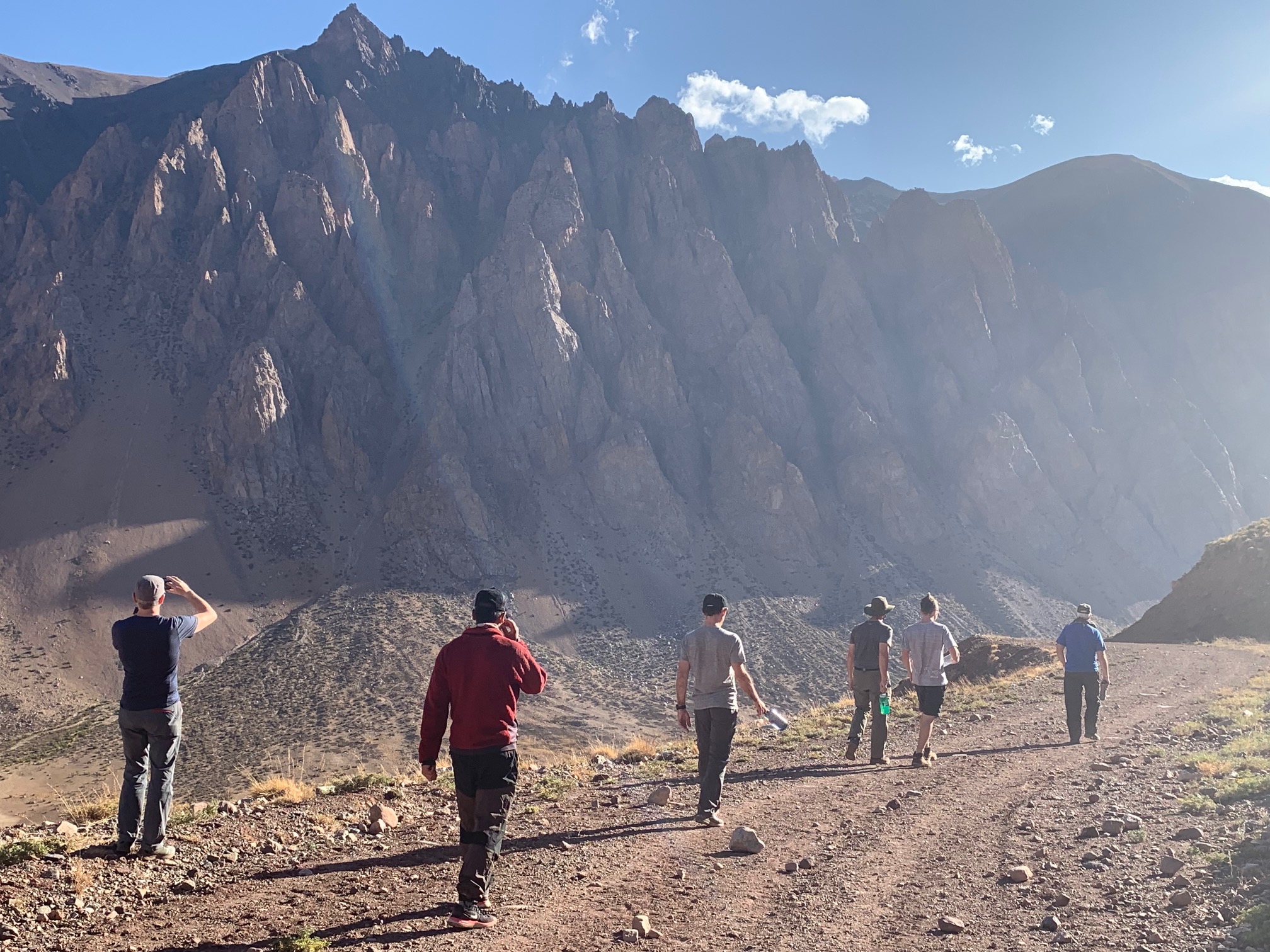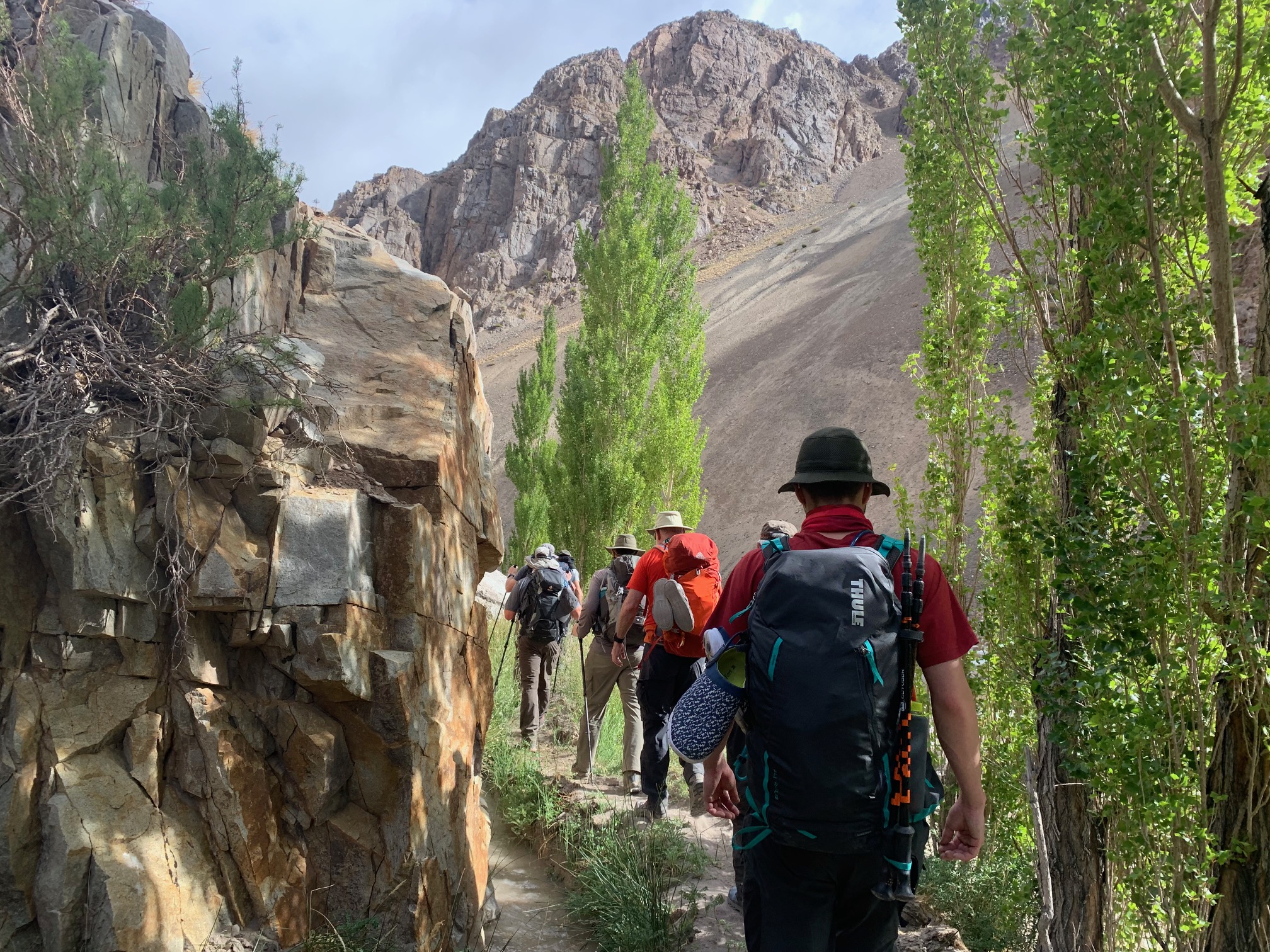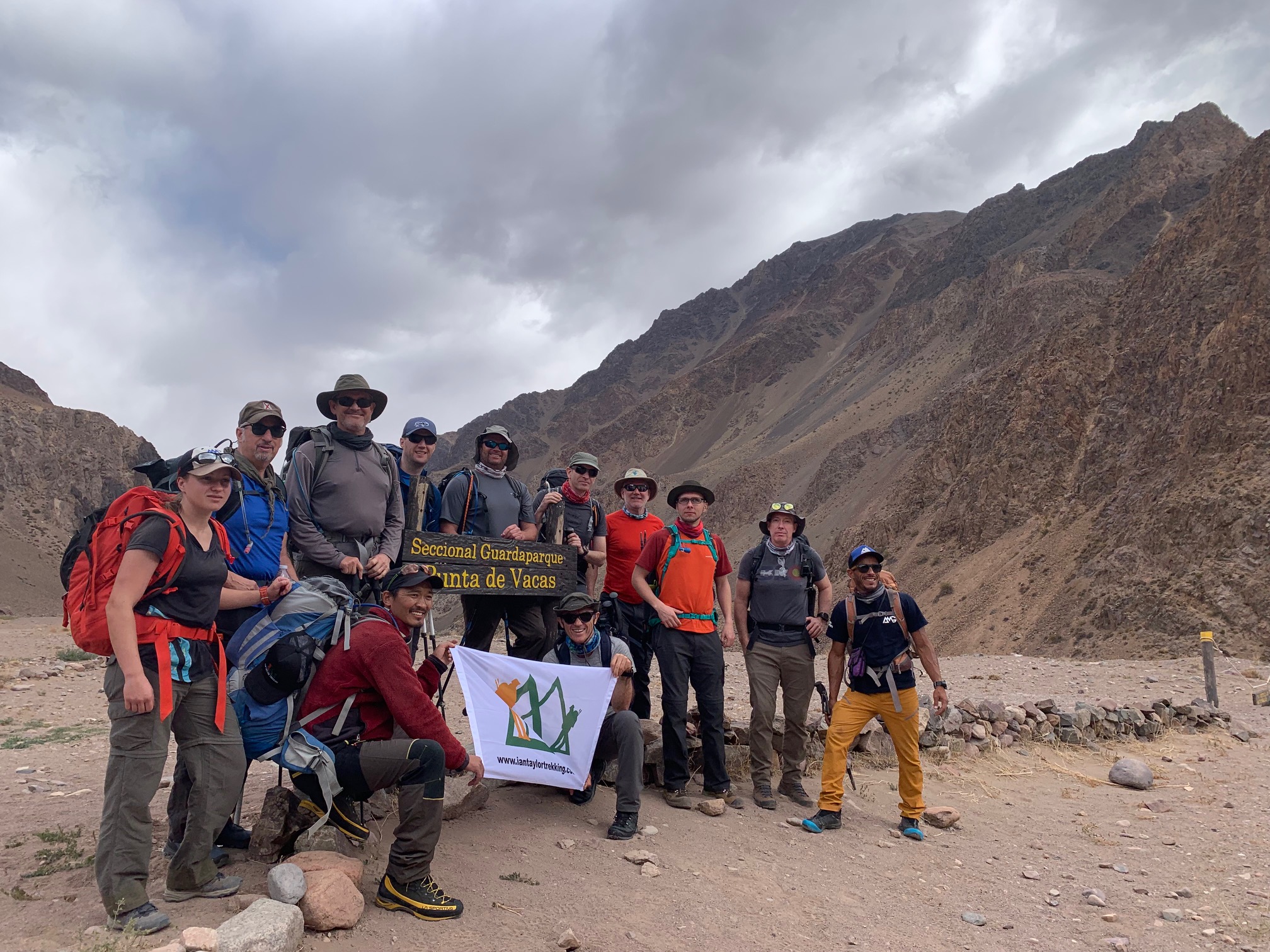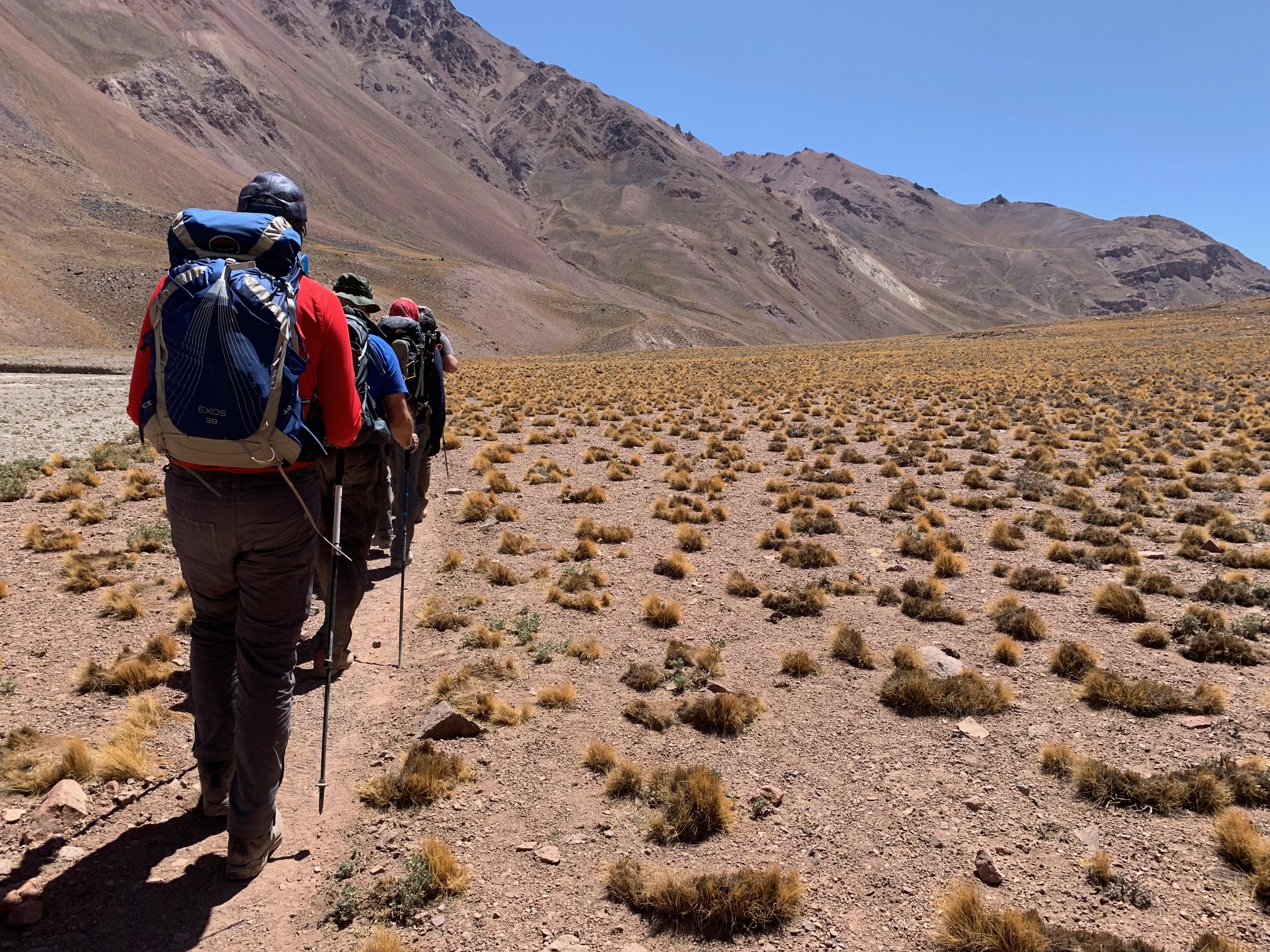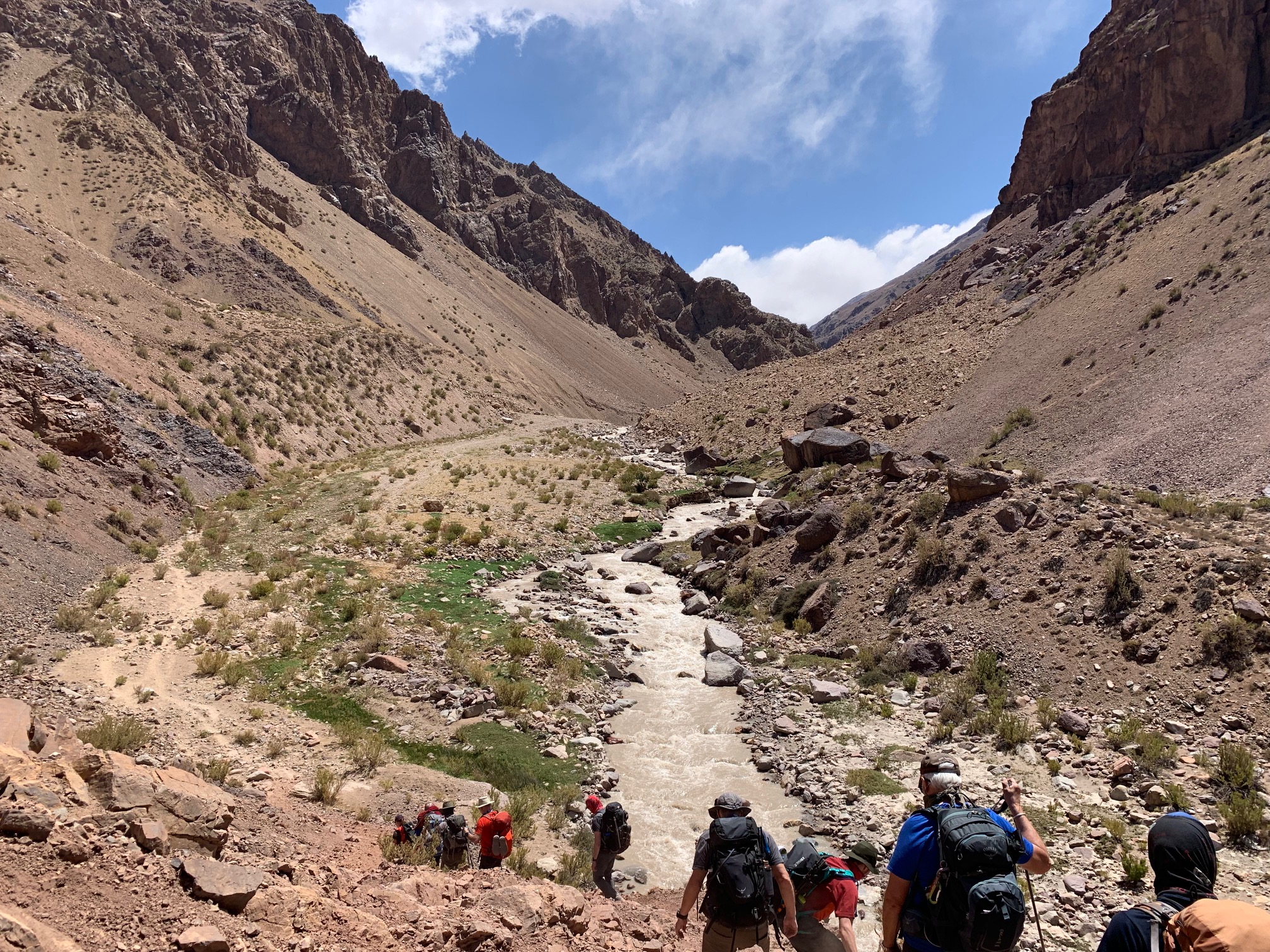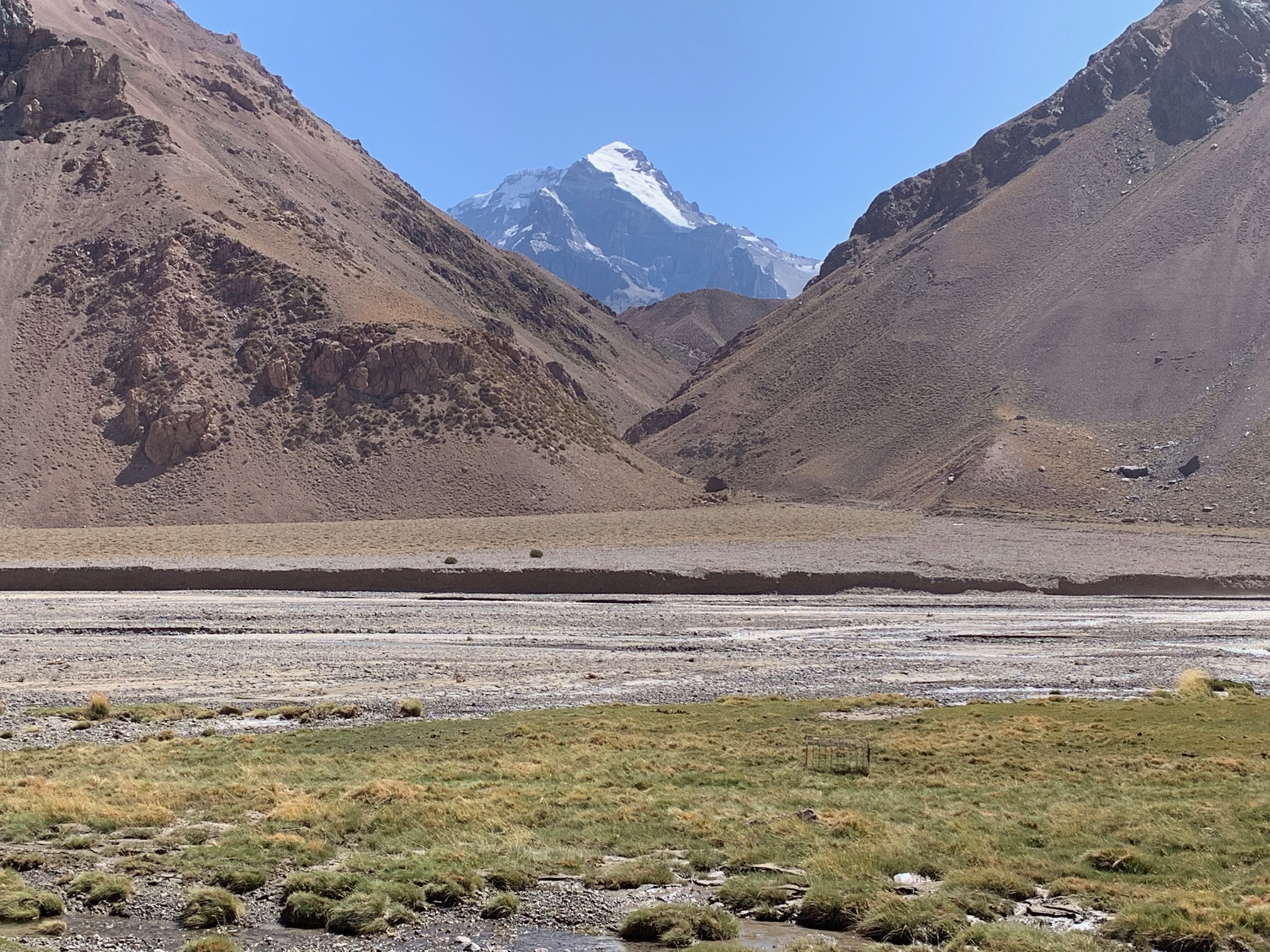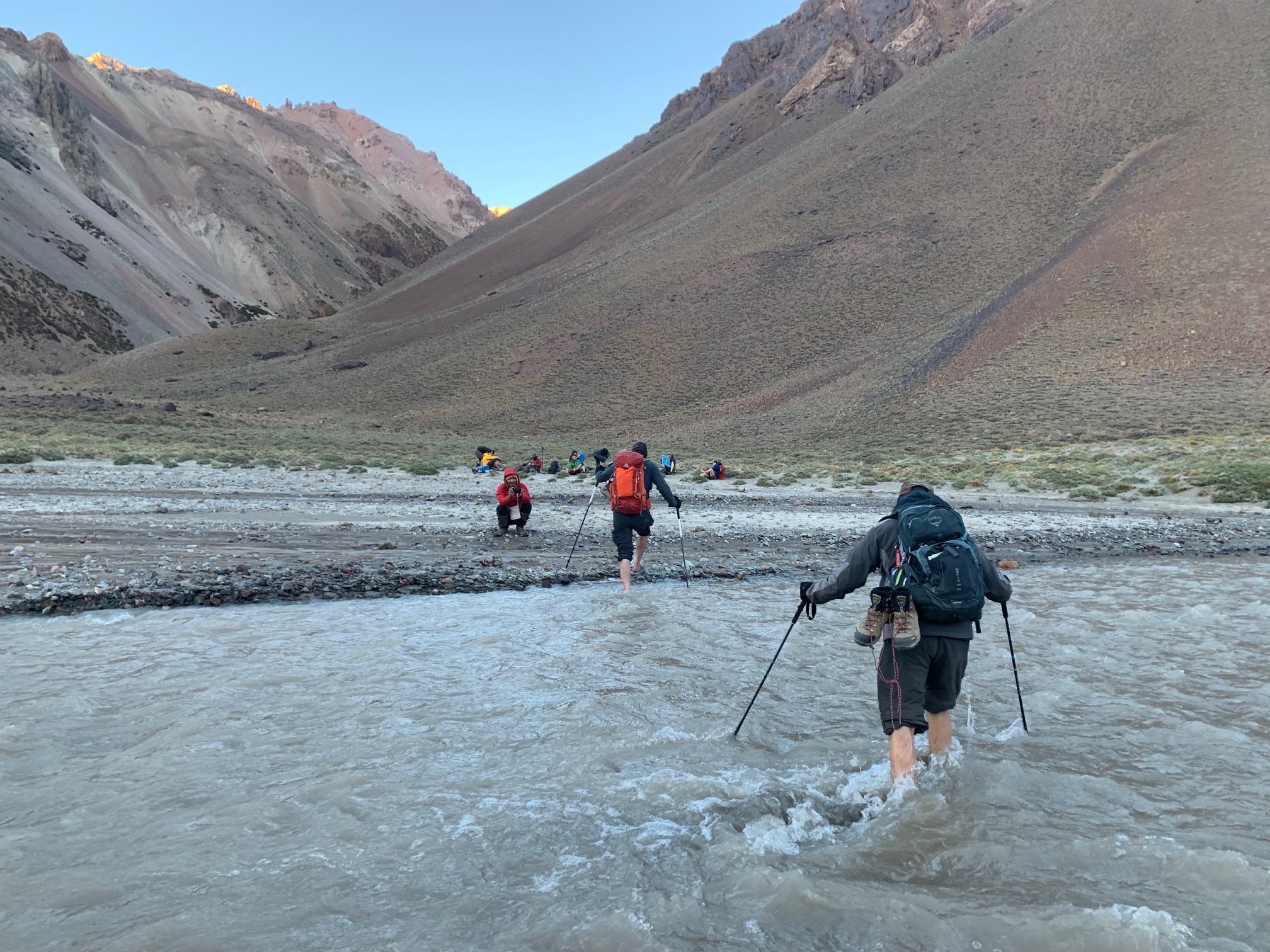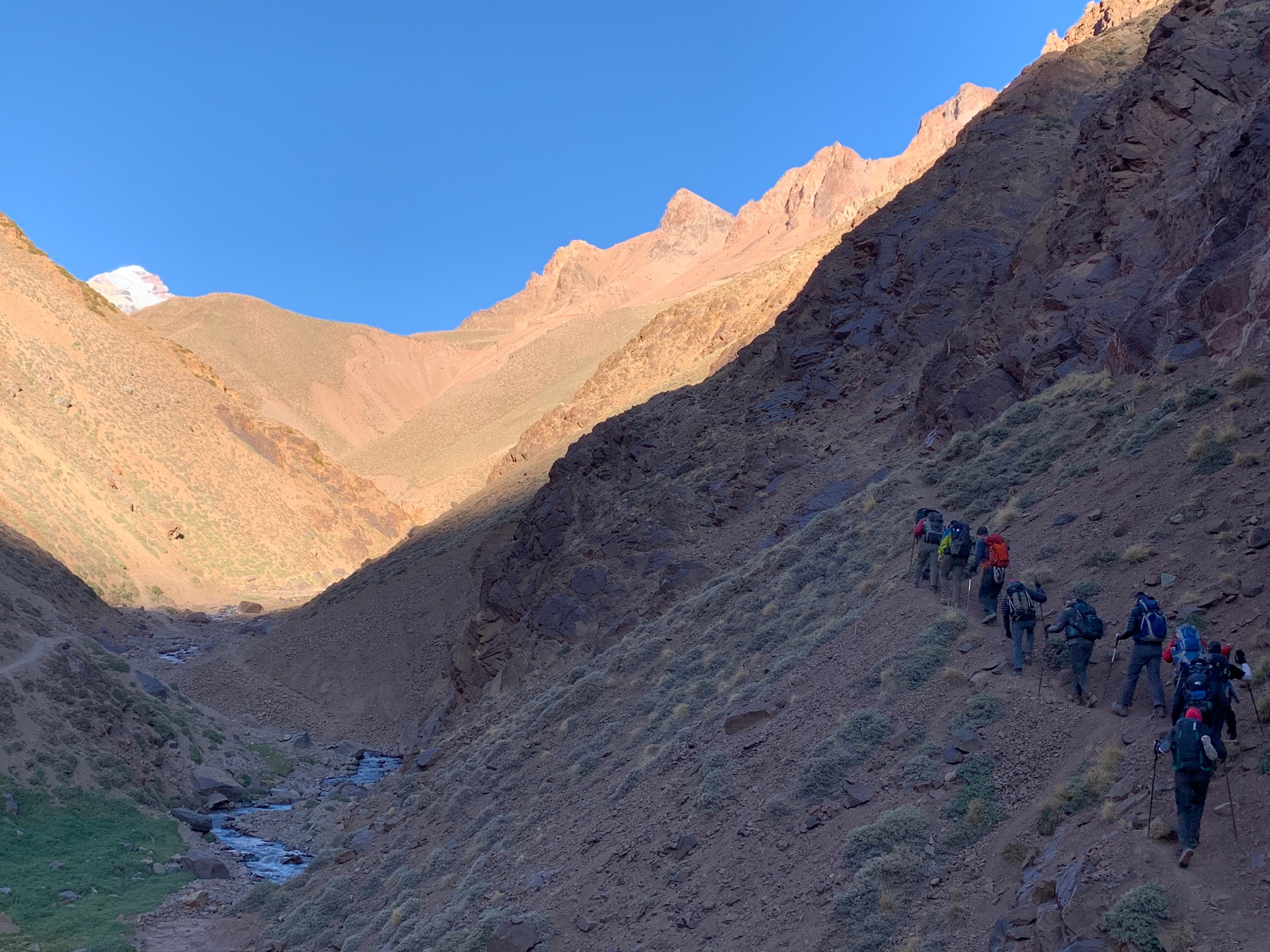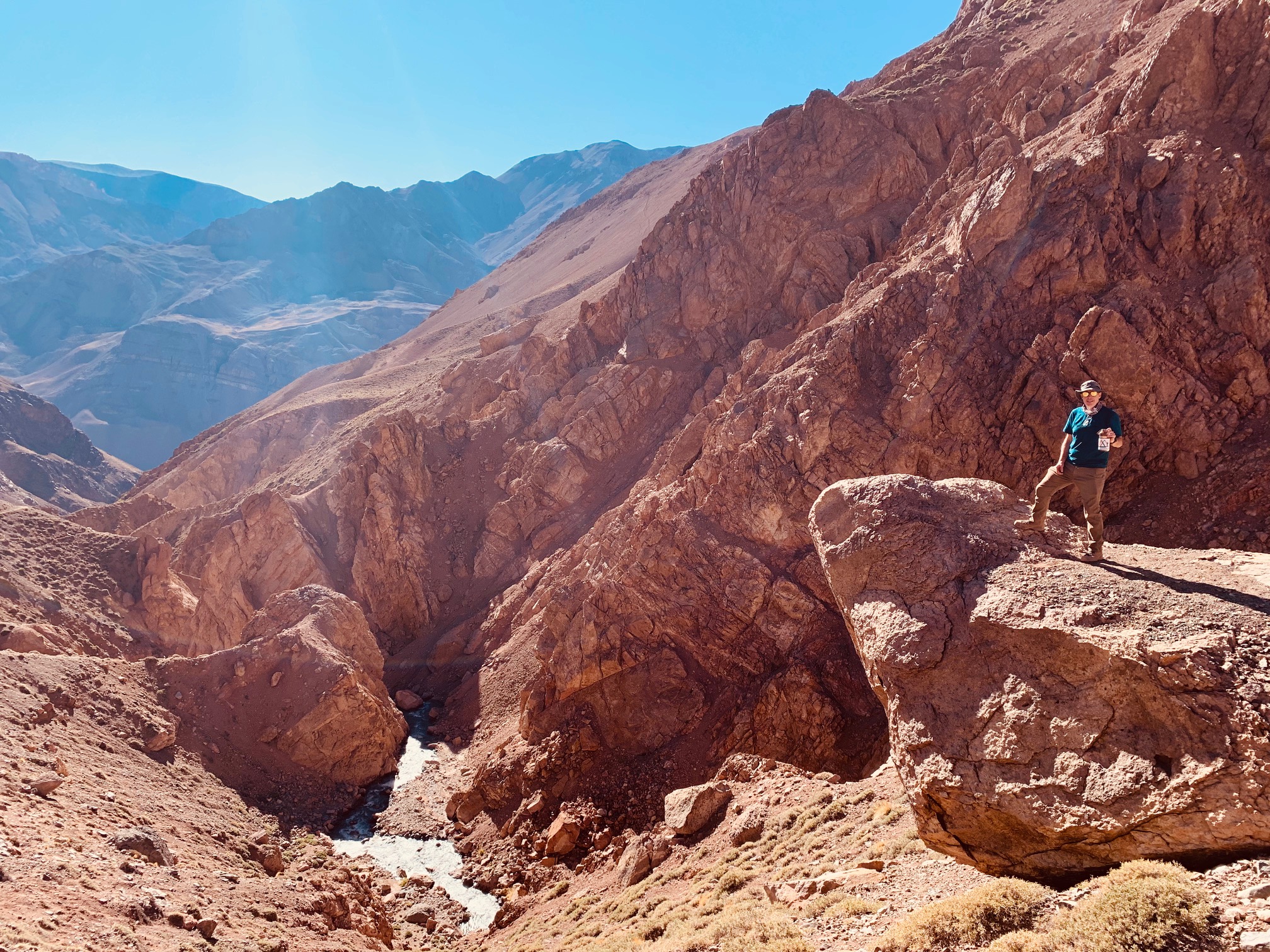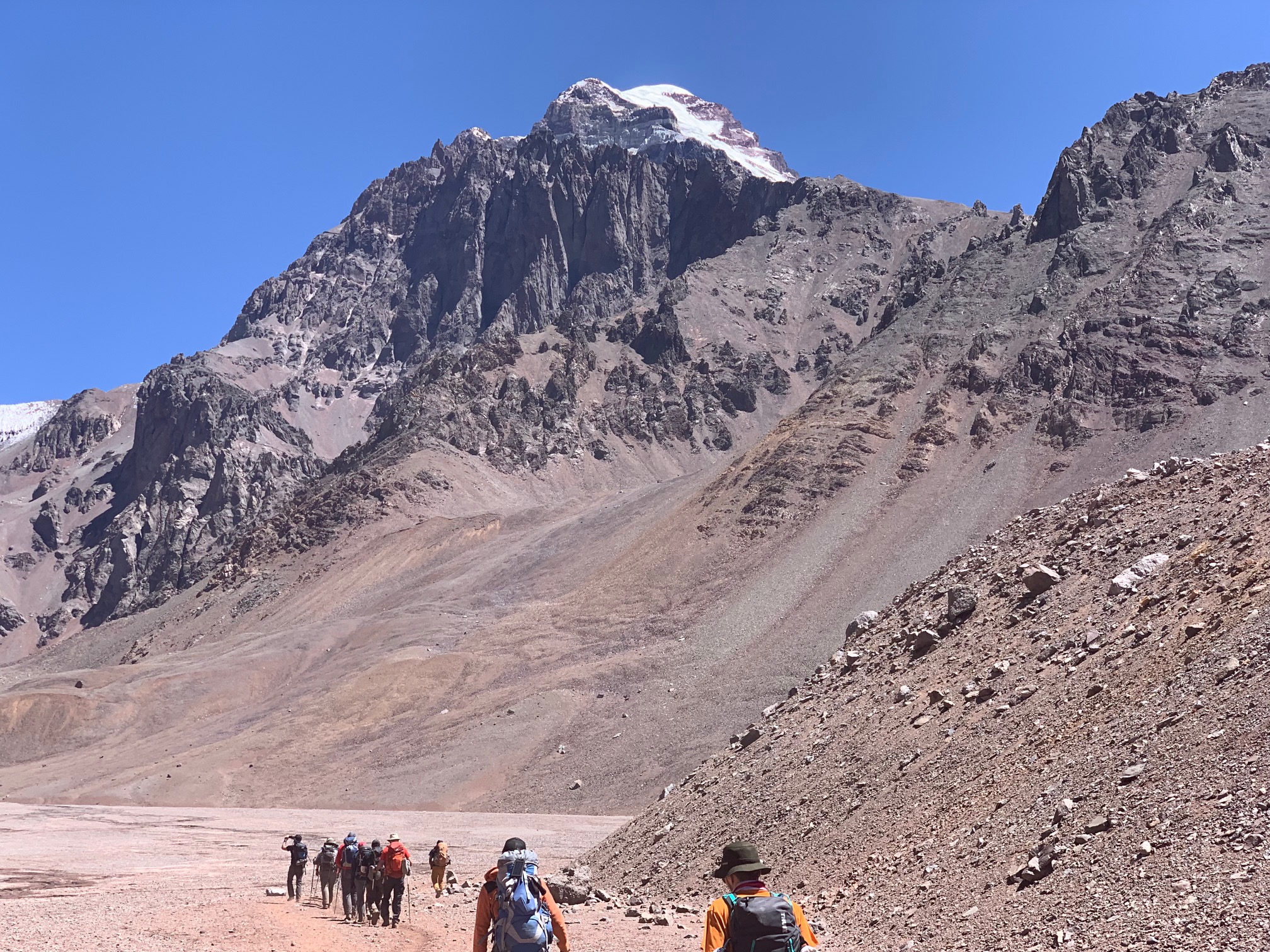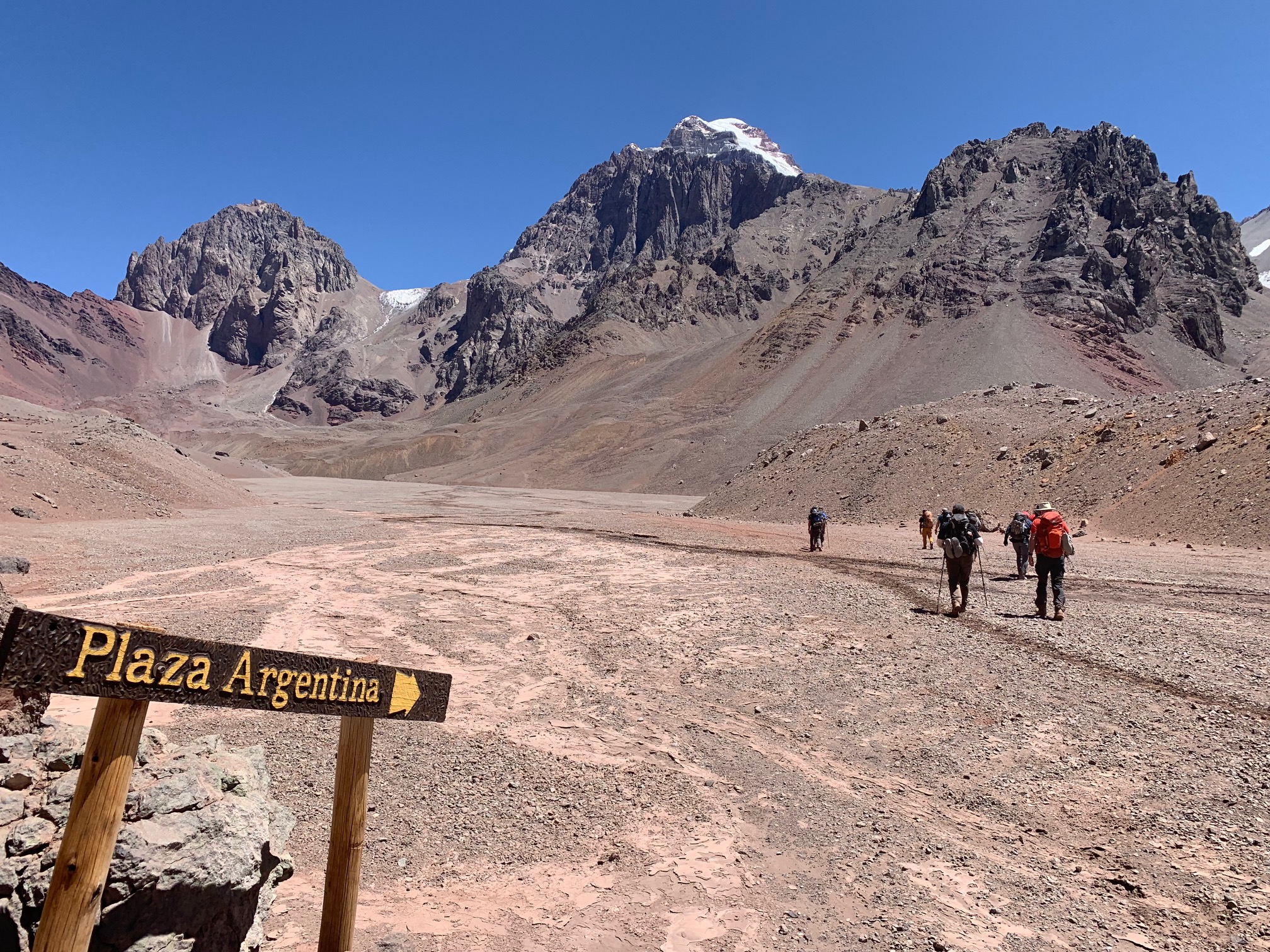After years of climbing Aconcagua we have put this, all you need to know about climbing Aconcagua page together for you. We have added all the most important links and pages below. I have climbed Mount Everest and Aconcagua 8 times and happy to chat with you directly as you start to prepare for this adventure. We are big fans of the Vacas valley traverse route for an Aconcagua climb.
If you haven’t, you need to sign up to climb Aconcagua with our Aconcagua Guides and undertake what could potentially become the greatest adventure of your lifetime!
We are here to help you prepare for everything Aconcagua and understand the training needed to climb Aconcagua 6,962m/ 22,841 feet. Standing on the summit of Aconcagua is an breathtaking experience and we have developed a service to exceed your expectations.
Don’t trust us? Read some REVIEWS from our trips.
Aconcagua is the highest Mountain in South America and the highest mountain in the world outside of Asia. This trip is it all, lots of steak, extreme altitude, challenging mountain conditions and excellent wine tours!!
Over the past fifteen years of running Aconcagua tours, we have compiled a list of everything you need to know about the trek. This information is to help you discover everything you need to know about trekking up and down Aconcagua, including how to prepare and what to expect from the trip.
Climbing Aconcagua
We run 5 trips a year on Aconcagua, on the two main routes up the mountain. GET IN TOUCH today for more about the two routes, and sign up to one of our unique itineraries!
What is so special about it?
Well, first, the fact that Aconcagua is one of the seven summits. The highest mountain in South America and highest mountain in the world outside of Asia. The mountain and experience are unique hiking through a range of climatic zones an dry desert, across glaciers in a dry desert landscape in Argentina.
Secondly, Aconcagua has 2 main routes, we have climbed them, our preferred route is the Vacas Route. We have gone a step further and developed our own itinerary, offering more acclimatization in Base Camp and Camp 2 5,500m/ 18.044 feet. This gives our teams the best chance at the summit.
Thirdly, the experience. The mountain is what draws you to see if you have what it takes to reach the summit. What you leave with will be so much more than that. Not only will you experience unique mountain landscapes but the food, service along with showers and Wi-Fi in Base Camp make this a more comfortable journey.
And last but not least, the primary reason for people hiking Aconcagua lies at its very end – the magnificent summit at 6,962m/ 22,841 feet. Or, to be more precise, traversing through the challenging canaleta and standing on the summit of Mount Aconcagua. One of the most challenging and rewarding experiences of your life. It’s not a view you forget.
After that remarkable summit, Aconcagua summiteers walk away knowing they have reach one of the coveted seven summits.
How Many Days Does Aconcagua take to climb?
After climbing Aconcagua over 8 times I high recommend joining a 21 day expedition on the mountain for the ideal chance at making the summit. No matter how many times we have been on this wonderful expedition, we are still stunned and in awe of this stone sentinel.
Our Most Popular Tour
The Vacas Valley route trek covers100km/ 62 miles and gives the visitor plenty of time for adequate acclimatization. The route into Base Camp is longer than the normal route but offers a more beautiful route with less people.
The Vacas Valley has an innate beauty which can only be admired as you pass through these baron and dusty valleys.
Along the way, you will camp at 3 different campsites on Aconcagua, before moving higher on the mountain. There are 3 camps established higher on the mountain in very strategic positions for the best shelter, acclimatization and safety.
The Normal Route
Our Normal route tour takes starts trekking through the Horcones valley. This valley that leads to Aconcagua has some beautiful rock formations and distinct colors spread throughout the valley walls.
Aconcagua was created by the subduction of the Nazca tectonic plate beneath the South American plate. Aconcagua used to be an active stratovolcano in the late cretaceous period.
By picking this route to Aconcagua you have less distance to cover but the same strenuous trek with more people around you.
All you Need to Know About Climbing Aconcagua
1). Pick the best acclimatization and itinerary for your Aconcagua trip
2). How you should be training to best physically prepare for your trip to Aconcagua
3). Get FREE constant advice from our professional team
4). Have the right clothing and gear for your Aconcagua expedition
5). Pacing each day on the trail is critical to success
6). Why hydration is critical at high altitude and in low oxygen environments
7). Elevation gains on our Aconcagua climbs. This will help you formulate a better training plan
8). What sort of food will I get on Aconcagua trip
9). Read our TOP 20 TIPS for a successful Aconcagua Climb
10). What are the best months to Climb Aconcagua
11). What type of trekking boots should you have for your trek to Aconcagua
12). What Mountaineering boots should you consider for Aconcagua
13). What Helicopter evacuation cover you need for an Aconcagua climb
14). What additional expenses will you incur on your Aconcagua trip
15). You need to know how hard is it to climb Mount Aconcagua
16). Here are 10 reasons to pick us for your Aconcagua climb
17). The 4 most Important things to know about climbing Aconcagua
18). How do you train for hiking down hill.
19). One of our clients experience preparing for Aconcagua.
20). Learning more about training for High Altitude and low oxygen environments.
21). Learn more about Heart Rate Training zones.
Is Aconcagua a Trekking Peak
Technically, Aconcagua is a trekking mountain. The reality is you will be exposed to some big mountain conditions which you need to be aware of. Aconcagua is a serious high altitude expedition with no technical mountaineering on the routes we use. Depending on the month you may use crampons. The big challenges are in the high and extreme altitude, frigid temperatures and high winds.
Is Aconcagua a Difficult Climb
In terms of trekking and movement at high and extreme altitude, Aconcagua is pretty straight forward. The steepest section of the trip is up and down the Canaleta the last 800 feet to the summit. The challenges are in the low oxygen and load carry’s above Plaza Argentina Base Camp. Certainly the normal route is easier than the Vacas Valley traverse route. The Vacas valley route is totally doable for strong climbers and worth it to have less people around you on the mountain. The Vacas route is more interesting and better way to get the most out of your Aconcagua experience.
Firstly, going to extreme altitude above 5,500m/ 18,044 feet is potentially life threatening and needs previous experience and excellent conditioning. Secondly, The success rate on Aconcagua is approximately 30%. Yes, weather is a key factor in people not making it to the summit. Other factors are lack of acclimatization, lack of physical preparation and lack of spare days for summit attempts.
Hydration is Important on Aconcagua
Next to oxygen, water is the most important substance that our body needs to survive. Water makes up 60% of our body weight, and blood is normally about 94 percent water when the body is fully hydrated. Now, I am pretty sure that this is no surprise to any of you out there. However, I can’t tell you how many times I have been out backpacking, hiking or mountaineering with folks that just don’t give proper hydration the attention that it deserves. Learn more.
Aconcagua sits in a high desert and is extremely dry and cold, especially at an altitude above 6,000m/ 19,685 feet. You will dehydrate faster at altitude and when the air is dry and your respiration is higher, hydration becomes critical. You should be drinking 4 to 5 liters daily on Aconcagua.
Do Not Get Sunburnt
The sun is extremely powerful on Aconcagua and not your friend. The sun, combined with the cold wind will deplete fluid in your body. Your skin will be dryer along with the mucous membranes of your nose and throat. The sun can be punching on the trek into Plaza Argentina so make sure you are fully covered each day and do not get sun burned.
Be Ready for High Winds
From a mental perspective you need to be ready for high winds continually above Base Camp. Having the right clothing and gear is essential on Aconcagua. Check out our Aconcagua packing video. We also send you an itemized kit list on signing up. The weather can change multiple times a day, so understanding and having access to the right layers with you is really important.
It can be up to 80 Fahrenheit / 25 Celsius during the day and drop down to 30 Fahrenheit at night on the way into Aconcagua Base Camp. In camp 3, the temperature can drop down to -5 Fahrenheit/ – 20 Celsius so a wide range of gear will be needed for this expedition. We can help you pick out the correct clothing and equipment needed.
What Prior Experience you Need to be Successful
Firstly, we highly recommend taking a scientific approach to your training. This starts with do a fitness test or even better a VO2 max test. Understanding the heart rate zones you should be training in, help you develop the correct training program. Secondly, you will need prior altitude experience. We recommend you have been to 6,000m/ 19,685 feet. You should consider Kilimanjaro and Mount Elbrus. Mount Elbrus helps you test out your gear, clothing and mountaineering boots. It would be best to have climbed Island Peak 6,189m/ 20,305 feet or Mera Peak 6,476m/ 21,246 feet before thinking about joining an Aconcagua Expedition. It would be best to have a number of high altitude trekking and mountaineering trips under your belt. Understanding how your body performs in low oxygen environments is important.
Why Choose Ian Taylor Trekking
Aconcagua has a lot of operators but we use the best facilities and offer the highest quality service for our Aconcagua trips. Here are 10 reasons to pick us for your Aconcagua expedition. We work with a highly qualified local team with major logistics in place so we can offer you the best possible service. Aconcagua can be a harsh and challenging environment so we designed an itinerary and service for maximum comfort, safety and success. Read some REVIEWS from our trips.
Our team are available 5 days a week support for your Aconcagua Climb prior to arriving in Mendoza. On signing up we also send you our 40 page dossier with all the information you need for your trip. You will have access to a shower in both Base Camps, Wi-fi and professional food service in both Base Camps.
How Many Days are Needed to be Safe and Successful
The standard duration of the expedition for climbing the Vacas valley traverse route from Mendoza to Mendoza is 17-18 days. Our itinerary is 21 days with four potential days for a summit attempt to maximize safety and success. It is important to have three nights below 3,250 before moving to higher altitude. When we move to Base Camp we like to have 4 or 5 nights before staying higher on the mountain. However, this adds to the acclimatization in moving higher on the mountain. Not all expeditions have this acclimatization built into the trip. Additionally, spare days are key to options and safety.
We have 4 or 5 days when we can reach the summit of Aconcagua. We never relay on good weather, there can be heavy snowfall or strong wind in any months during the climbing season. Strong winds can blow for days on end. There are many trips when our teams only get to the the top on the fourth or fifth potential summit attempt. High winds can last for a week on this mountain.
All you Need to Know About Climbing Aconcagua
1). Consider Additional Acclimatization
We are lucky enough to live at 2,438m/ 8,000 feet in Colorado. This helps before arriving on the slopes of Aconcagua. If you have time we do advice having some additional acclimatization and you can go to altitude sleep near 8,000 feet and get in some hiking up to 10,000 feet or 11,000 feet. This would need to be done directly before arriving in Mendoza. You could also consider doing some Hypoxic training. There are a range of options out there. You might find more options in a city near you.
2). Pacing in Important Throughout the Trip
The pace of a trip at high altitude is a critical factor in you safely and successfully reaching your goal. You might consider pacing irrelevant or something that is not important on a long distance high altitude trip. However, we can assure you that the correct pace and heart rates can make all the difference between success and failure. Managing your heart rate through the trip is why we keep a very slow pace throughout the whole journey. Learn more.
3). Bring Lightweight Clothing and Gear
As important is the pace we hike at, just as important is keeping your backpack as light as possible. Keep your backpack as light as possible for the hike into Aconcagua Base Camp. Let the mules do the heavy work, your time will come. Check out our packing video. We will send you an itemized kit list on signing up. The lighter your gear the easier the journey from Plaza Argentina to Camp 3 high on Aconcagua.
4). Balanced Meals
6. It is recommended to avoid the consumption of too heavy food (meat) during the rest days and altitude acclimatization. Learn more about the food we serve on Aconcagua. We have planned out the meals to be as effective as possible. We do not recommend alcohol after leaving Mendoza.
5). Art Tent in Plaza de Mulas
Depending on the month you arrive in Plaza de Mulas Base Camp, make sure you visit the painter Miguel, living in a light large tent in the center of the upper part of the Base Camp. His art gallery is the highest of the world. Even if you won’t be interested in his art, it is worth a visit.
6). Schedule a Call With Ian
We hope you enjoyed this post about all you need to know about climbing Aconcagua. Ian has led over 150 expeditions above 17,000 feet and climbed Mount Everest and Aconcagua 7 times. He is always happy to impart information and help you gather as much information as possible. Contact us today and learn from our experience.

